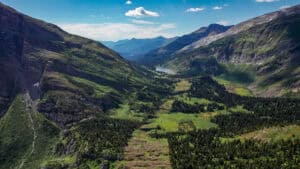Energy Connections Canada member, Trans Mountain, is committed to working with Indigenous People where they operate. Their goal is to build and sustain effective relationships based on mutual respect, to share mutual benefits and to work cooperatively and transparently. The announcement of the Trans Mountain Expansion Project presented a special opportunity to enhance their existing relationships with Indigenous People and their communities. The conversations have been invaluable to their Project planning and to developing understanding between communities and our industry.
Trans Mountain recognizes the cultural, spiritual and social interconnections with the natural environment for Indigenous groups and their territories crossed by the pipeline corridor. Approved mitigation plans are in place to reduce potential impacts to Traditional Land Use (TLU) areas and Heritage Resources along the construction footprint of the Expansion Project.
Through years of Project planning, extensive information has been collected and/or provided through TLU studies and a comprehensive archaeology program. Information about known TLU and cultural sites has been incorporated into their plans, such as Environmental Protection Plans, Environmental Alignment Sheets and Resource-Specific Mitigation Tables. These documents guide construction contractors, Environmental Inspectors and Indigenous Monitors regarding field requirements and mitigation during construction activity.
Trans Mountain is bound by confidentiality agreements developed with Indigenous groups who agreed to share confidential cultural information with them to inform Project planning and to ensure appropriate mitigation is developed.
Examples of Traditional Land Use Sites
Traditional Land Use refers to the access and use of natural resources or landscape by Indigenous groups for traditional purposes. Some examples of TLU sites are:
- Culturally Modified Trees – Trees that have been modified by humans and are most often altered by Indigenous People during spiritual or resource harvesting activities (e.g., cedar and birchbark stripping).
- Hunting Sites – Areas where large mammals such as elk, moose and deer are harvested. This may include mineral licks, calving areas and game trails.
- Fishing – Traditional fisheries relate to the species harvested, fishing techniques and the nature of specific reaches of lakes and rivers. Fishing areas include water bodies that are often near staging areas and access points to the water. Secondary fishing processing areas may include processing yards, smokehouses and drying racks.
- Plant Gathering – Areas where Indigenous Peoples harvest medicinal, ceremonial and food-source plants. Plants are gathered in a variety of environments, which include old forests along watercourses and in rugged or mountainous areas.
- Sacred Sites – Sites may include vision quest locations, rock art panels, birth locations and ceremonial places, amongst others. A particular element is often only a small component of a larger spiritual complex and by its nature in the context of Indigenous spirituality, may be inestimable and irreplaceable.
Examples of Potential Site-specific TLU Site Mitigations that are finalized in partnership with Indigenous communities:
-
- Avoidance of the site, if possible
- Installing signage and fencing
- Detailed recording and mapping
- Ceremonies
- Replacing plant species during reclamation
Examples of Heritage Resource Sites
Heritage Resources refer to objects, sites and areas of cultural, historical or archaeological significance to Indigenous Peoples and Canada. Some examples of culturally important pre-contact sites are:
- Cultural Depressions – Hand dug, predominantly circular pits used for material and food storage, roasting pits or as pit houses.
- Pictographs – Sacred images painted onto stone.
- Petroglyphs – Sacred images carved, scratched or incised onto stone.
- Burial Features and Ancestral Human Remains – Can be represented by a single tooth or a complete skeleton.
- Lithic Scatters – Can be represented by the remains of stone flakes generated from tool production.
- Historic Sites – Represented by a wide variety of sites from the fur trade to modern day. Consists of ruins or buried sites. Other examples of historic sites following the arrival of Europeans can include trading posts, early settlements, cabins and homesteads.
Examples of Potential Site-specific Heritage Resource Site Mitigation finalized in partnership with Indigenous communities and regulators.
- Avoidance of the site, if possible
- Detailed recording and mapping
- Additional archaeological excavation (e.g., shovel testing or systematic data recovery)
- Monitoring during construction by a qualified archaeologist
Trans Mountain is committed to continued listening, learning and working with Indigenous People to ensure knowledge and advice is fully considered and incorporated in the Project.




